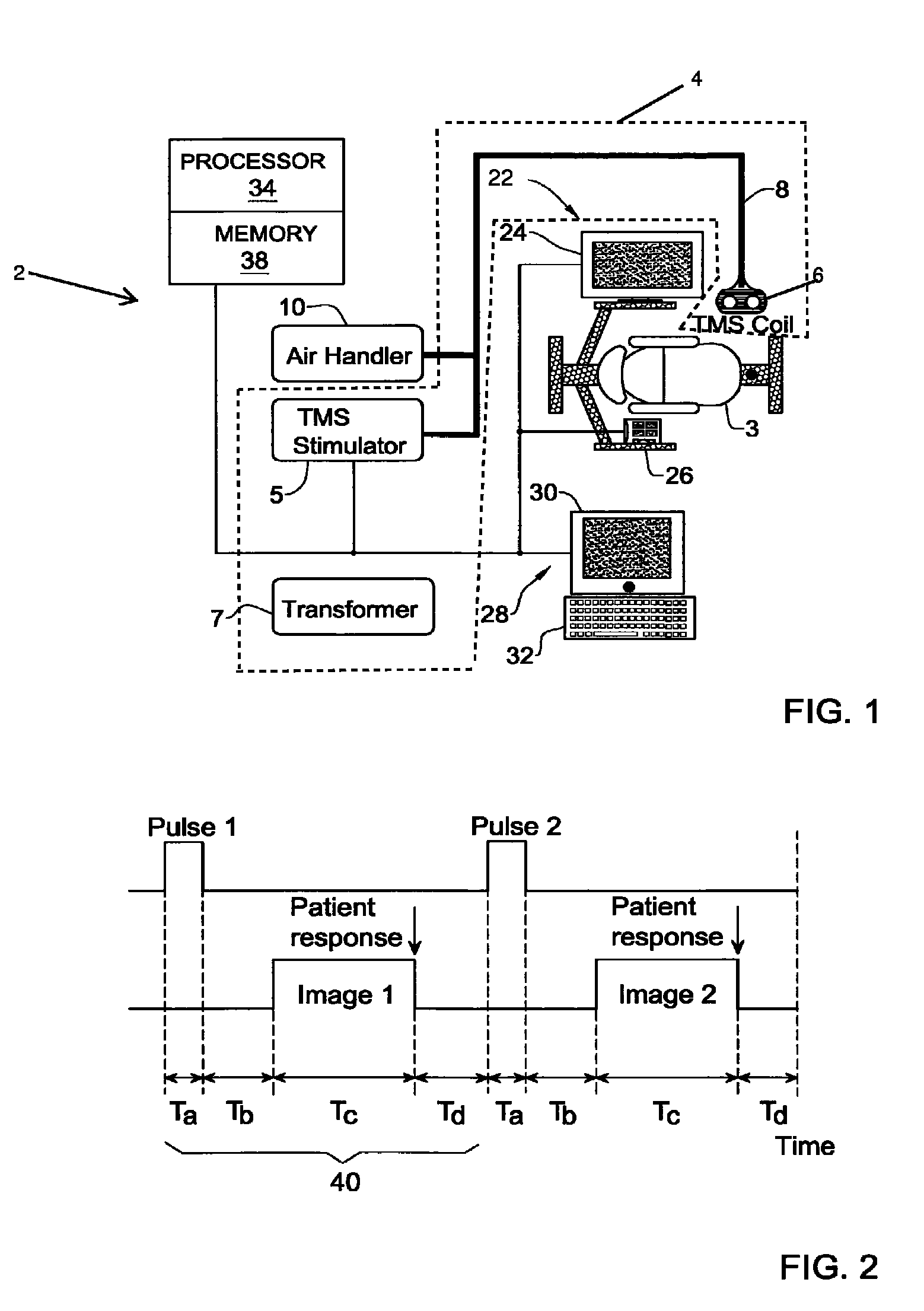Method and system for neurological treatment
a neurological and treatment method technology, applied in the field of medical devices, can solve the problems of long-term decline due to damage or disease in the body, irreversible but fixed cognitive impairment, and affect the ability of affected persons to concentrate, and achieve the effect of improving cognitive abilities
- Summary
- Abstract
- Description
- Claims
- Application Information
AI Technical Summary
Benefits of technology
Problems solved by technology
Method used
Image
Examples
example
[0073]In a clinical study performed in Israel, mild-moderate Alzheimer patients (DSM-IVR) (Mini Mental State Examination, MMSE from 18 to 24) were treated by the system of the invention in which the NS was BiPhasic rTMS with a frequency of 10 Hz, the pulse time was 2 sec, and the repetition rate was 30-50 sec. rTMS strength was set at 80-90% of the motor threshold. There were 6 brain regions which were treated in total, out of which 3 were treated on each day. Brain regions were chosen as those known to be affected and deteriorate in the AD. The brain regions treated were: Broca, Wemicki, Somatomotory Left, Somatomotory Right, Dorsolateral Prefrontal Right, Dorsolateral Prefrontal Left. The regions were located by an MRI scan. Each brain region received a dosage of 20 trains of pulses, or 400 pulses all together. The patient received a total of up to 1,200 pulses per day. CT started immediately or within 5 seconds following the end of the NS train, and lasted for 30-50 sec, until th...
PUM
 Login to View More
Login to View More Abstract
Description
Claims
Application Information
 Login to View More
Login to View More - R&D
- Intellectual Property
- Life Sciences
- Materials
- Tech Scout
- Unparalleled Data Quality
- Higher Quality Content
- 60% Fewer Hallucinations
Browse by: Latest US Patents, China's latest patents, Technical Efficacy Thesaurus, Application Domain, Technology Topic, Popular Technical Reports.
© 2025 PatSnap. All rights reserved.Legal|Privacy policy|Modern Slavery Act Transparency Statement|Sitemap|About US| Contact US: help@patsnap.com



